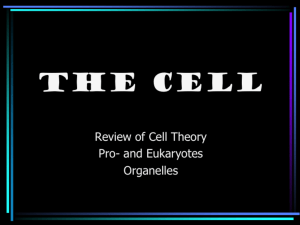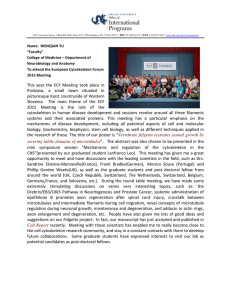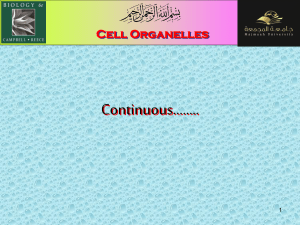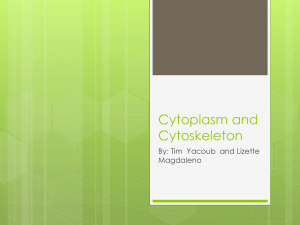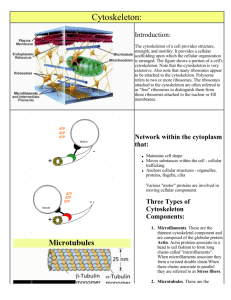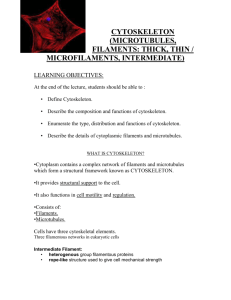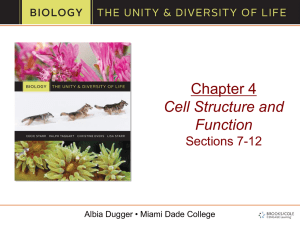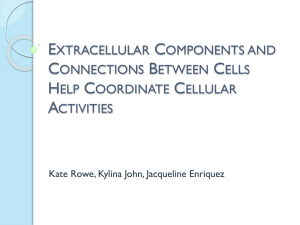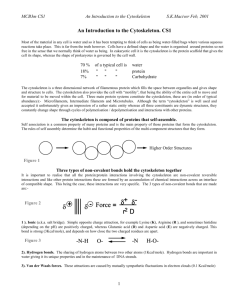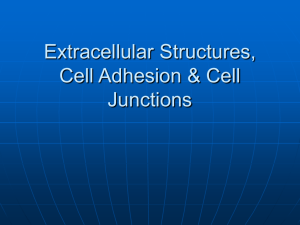File - Biology with Radjewski
advertisement
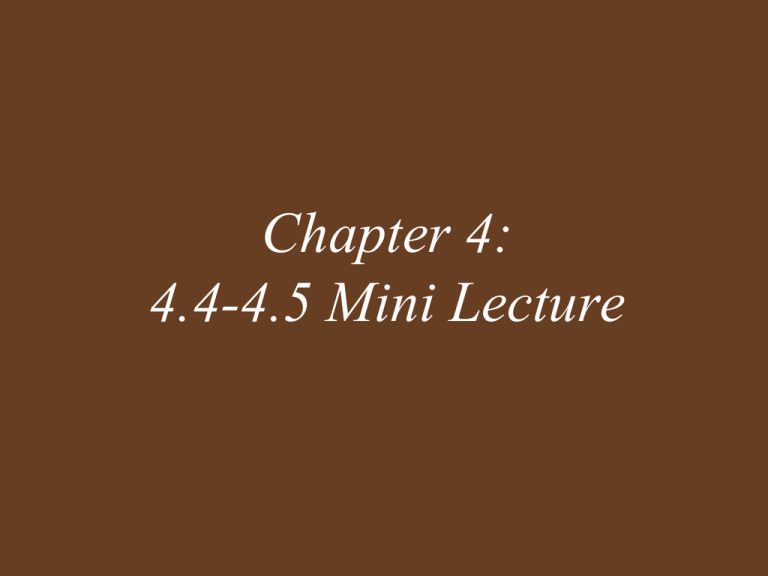
Chapter 4: 4.4-4.5 Mini Lecture Concept 4.4 The Cytoskeleton Provides Strength and Movement The cytoskeleton: • Supports and maintains cell shape • Holds organelles in position • Moves organelles • Is involved in cytoplasmic streaming • Interacts with extracellular structures to anchor cell in place Concept 4.4 The Cytoskeleton Provides Strength and Movement The cytoskeleton has three components with very different functions: • Microfilaments • Intermediate filaments • Microtubules Concept 4.4 The Cytoskeleton Provides Strength and Movement Microfilaments: • Help a cell or parts of a cell to move • Determine cell shape • Are made from the protein actin—which attaches to the “plus end” and detaches at the “minus end” of the filament • The filaments can be made shorter (more detachment) or longer (more assembly) Concept 4.4 The Cytoskeleton Provides Strength and Movement Intermediate filaments: • At least 50 different kinds • Have tough, ropelike protein assemblages • more permanent than other filaments • Anchor cell structures in place • Resist tension, maintain rigidity Concept 4.4 The Cytoskeleton Provides Strength and Movement Microtubules: The largest diameter components, with two roles: • Form rigid internal skeleton for some cells or regions • Act as a framework for motor proteins to move structures in the cell Concept 4.4 The Cytoskeleton Provides Strength and Movement Microtubules line movable cell appendages. Cilia—short, usually many present, move with stiff power stroke and flexible recovery stroke Flagella—longer, usually one or two present, movement is snakelike Concept 4.4 The Cytoskeleton Provides Strength and Movement Cilia and flagella appear in a “9 + 2” arrangement: • Doublets—nine fused pairs of microtubules form a cylinder • One unfused pair in center Motion occurs as doublets slide past each other. Figure 4.13 A Motor Protein Drives Vesicles along Microtubules Figure 4.15 The Plant Cell Wall The plant cell wall has three major roles: •Provides support for the cell and limits volume by remaining rigid •Acts as a barrier to infection •Contributes to form during growth and development Concept 4.5 Extracellular Structures Allow Cells to Communicate with the External Environment Adjacent plant cells are connected by plasmodesmata. These channels allow movement of water, ions, small molecules, hormones, and some RNA and proteins. Concept 4.5 Extracellular Structures Allow Cells to Communicate with the External Environment Many animal cells are surrounded by an extracellular matrix. The fibrous component is the protein collagen. The gel-like matrix consists of proteoglycans. A third group of proteins links the collagen and the matrix together. Concept 4.5 Extracellular Structures Allow Cells to Communicate with the External Environment Role of extracellular matrices in animal cells: • Hold cells together in tissues • Contribute to physical properties of cartilage, skin, and other tissues • Filter materials • Orient cell movement during growth and repair Concept 4.5 Extracellular Structures Allow Cells to Communicate with the External Environment Cell junctions are specialized structures that protrude from adjacent cells and “glue” them together—seen often in epithelial cells: • Tight junctions • Desmosomes • Gap junctions Figure 4.18 Junctions Link Animal Cells (Part 1) Tight junctions prevent substances from moving through spaces between cells. Desmosomes hold cells together but allow materials to move in the matrix. Gap junctions are channels that run between membrane pores in adjacent cells, allowing substances to pass between the cells.
